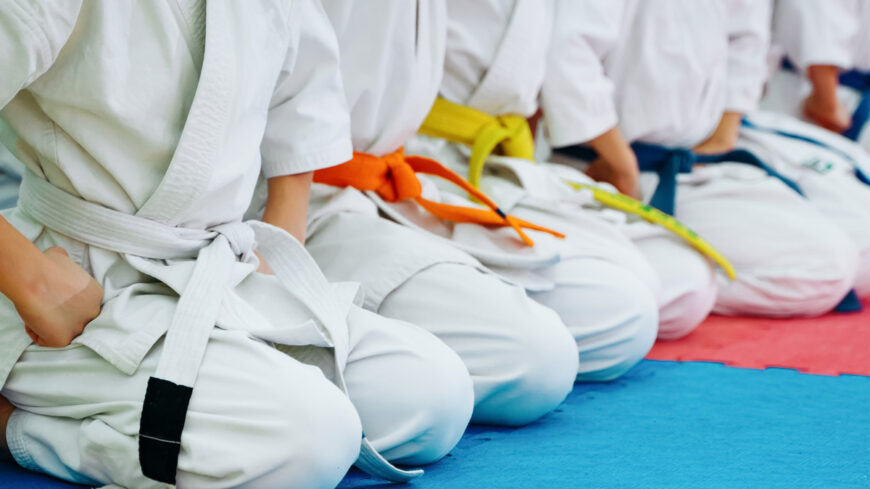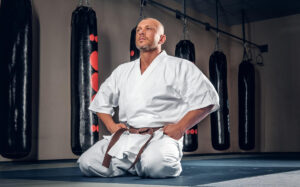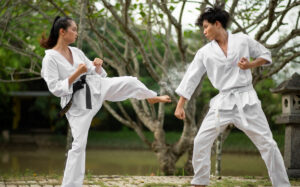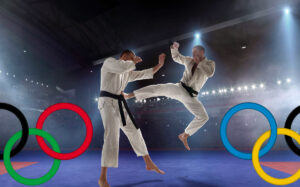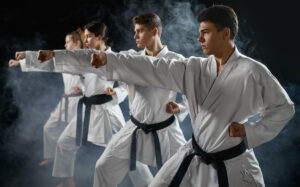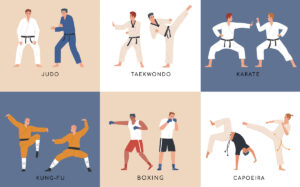Martial art is a combination of multiple forms of combat used for self-defense that is predominant in the Asian region. Most countries in this region have their types of martial arts. The famous ones include Karate, Kung fu, Judo, and Taekwondo.
For a long time, martial arts didn’t have a belt system. The decision was left to the master in cases like Kung Fu to decide who is the most skilled. The ranking depended on how long the martial art student had been an apprentice.
But Kano Jigoro, who hails from Japan, solved the puzzle when he invented judo in 1883. Many cultures that encourage martial arts have since embraced this form of ranking symbolized by different colors of belts or sash.
With that, many schools use these colors in varying numbers depending on the type of martial art. Most will range between six and nine colors. For clarity, the following is an analysis of martial arts belts, their colors, and their ranks.
But first.
Origin of Martial Arts
It’s a widespread belief that martial arts originated from the Asian region. But evidence suggests it was an exchange of culture between the Indian and Chinese cultures during the war (420-221 BC).
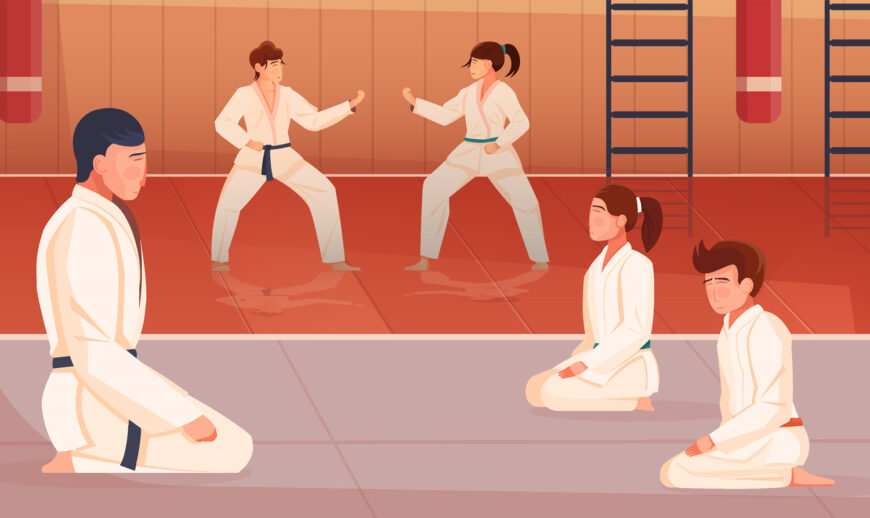
Legendary stories point to the spread of Buddhism to China, which gave birth to Shaolinquan, where the famous kung fu Shaolin style began. Shaolin is one of the well-known Chinese martial arts types popular in movies and schools that offer the training.
Types of Martial Arts
There are various types of martial arts, as briefly mentioned. An expansive list includes:
- Mixed martial arts
- Khun khuner
- Lethwei
- Sanda (wushu)
- Judo
- Karate
- Kungfu
- Muay Thai
- Taekwondo
- Brazilian Jiu-Jitsu
As mentioned earlier, most martial arts types have a form of ranking by using different color belts. The common ones include Karate, Taekwondo, Judo, and Kung fu. We shall focus on Karate and Kung fu to better understand the belt rankings.
Karate
A type of martial art practice that bars the use of weapons. It stems from the traditional Ryukyuan martial arts with influence from Chinese martial arts.
The style involves using arms (elbows, punching, knife hands) and legs (kicking, knee strikes, and heel strikes). Recently, modern karate spots grappling, throwing, restraints, joint locks, and more.
A karate student has to rise through the ranks symbolized by a specific color belt to become good at it. The different colors up to the brown belt are known as the Kyu set. And the multiple levels of black belts are called dan sets. Hence, let’s look at how the progression flows.

White Belt
In Karate, this is the beginning point which isn’t rated but where the basics feature. There is no expertise taught other than the white belt acts as a wrapper to hold the karate outfit known as Gi.
Orange Belt
After familiarizing themselves with the Karate basic training, the karate students receive an orange belt, the first belt. It means the trainees have known the meaning of Kyokushinkai, an indication of a good start in training. Also, the students can master the art of folding the Karate Gi and understand the dojo etiquette.
Orange Belt with a Black Dash
The second Karate belt is called Shinkyokushin. Here the martial artist is expected to show progress in understanding the history of Kyokushinkai coupled with Shinkyokushinkai. At this stage, the teaching revolves around the mastery of different strikes, defenses, stances, and Kata Taikyoku Sono Ichi (grand ultimate) plus Taikyoku Sono ni (into first cause).
Blue Belt
It’s the official third belt in the Karate ranking, where the knowledge of the previously taught skills and techniques at the orange belt level needs mastering. The training emphasizes working on the upper body focusing on flexibility, coordination, balance, and strength. This level also exposes the student to the practice of better mind and body control.
Blue Belt Marked With a Dash
This category is an advanced level of the blue belt. It’s better defined by the high endurance training ability of the student despite their body and mind being exhausted. Also, a breathing style called “Ibuki” comes to the fore at this level.
Yellow Belt
Here the student exhibits an advanced understanding of the Karate basics. It’s usually a make-or-break phase for the student. They’ll have to decide whether to proceed higher where there will be more demand on them or to retreat.
Advancing means the training begins to center on coordination to enhance the harmony of the body and mind. Several strikes come to the fore. Some of them include:
- Uraken Uchi (back fist strike)
- Uraken hizo Uchi (back fist strike to the bowel),
- Uraken mawashi uchi (back fist circular strike to the head),
- Ushiro Empi (back elbow strike), plus more.
Yellow Belt Marked With a Dash
The primary skill that marks this level of martial art practice is the middle height round horse kick. Also, the ability to do one-handed push-ups and a progressive stance are called Moro ashi dachi (one-foot forward posture).
This category is known as the last of the beginner’s belt ranking. Those donning the belt need to start showing expertise by using the acquired knowledge to control their minds and bodies better.
Green Belt
The color represents growth, and the stage signals increased physical requirements. This category features the default round horse kick. The kick combines with other strikes like:
- Shuto age uki (rising knife hand block)
- Shuto uchi (knife hand strike)
- Choku zuki (straight hand punch)
- Kagi Zuki (hook punch) and more
More emphasis wheels around physical and spiritual growth as a foundation to grow to higher belt levels.
Green Belt Marked With a Dash
The martial artist graduates with a new skill set that requires the expert use of elbows. The martial art practice involves a demonstration of multiple elbow strikes for the best students to master. Some of these strikes include:
- Age Hiji ate Jodan (high rising elbow strike)
- Mae Hiji ate (forward elbow strike)
- Ushiro Hiji ate (backward elbow strike)
Brown Belt
Getting here isn’t a mean feat for the Karate student. In equal measure, to proceed to the next level, there is a requirement that’s demanding called a 15×1 minute Kumite. Additionally, the practicing artist begins to understand the special meaning of the karate process. Some will entail working with black belt holders.
Part of their uniqueness comes from observing moves by the pros. After which, they are encouraged to tweak, refine, or invent their own to carve a unique path for themselves.
Brown Belt Marked With a Dash
A distinguished belt that prepares and ushers the students to the regular black belt. It’s a requirement that a trainee stays for 12months with the belt before attempting to receive the black belt. The student combines all the previous training to become unique to refine their technique.
Black Belt 1 (Shodan) Has One Dash – Senpai
Attempting the first-degree black belt means all the basic skills need to be well refined and mastered. To confirm the student’s progress, they will need to demonstrate all the fundamental skills in Gyaku. The aspirant needs to be physically and mentally fit to illustrate all the techniques without incurring injuries.
Contrary to most beliefs, this isn’t the culmination but the beginning where the aspirant ventures into the world seeking more ways to grow and become better.
Black belt 2 (Nidan)
Like the previous levels, the second-degree black belt requires demonstrating everything learned in all the preceding stages. A tremendous amount of physical tolerance is needed. Tameshiwari, which means breaking, is a process that ensures your physical fitness matches this level.
On top of Tameshiwari, the candidate will have to successfully perform 400 sit-ups,100 push-ups plus one-hand push-ups, and 25 for each hand.
Black Belt 3 (Sensei)
The candidate should complete three years as a black belt-two holder before attempting for the third-degree black belt. The aspirant needs to exhibit advanced teaching abilities, backed by a deep knowledge of karate history.
However, the sensei is only the third-degree back belt, a far cry from the 10th degree, which is the epitome of the black belt in Karate.
Kung Fu
Other than Karate, another favorite type of martial arts is kung fu. It is mainly practiced in China and has around 400 sub-types depending on the location. The term kung fu or wushu means a technique practiced and mastered for an extended period.
Among the many types of kung fu, the most famous are Tai chi, Shaolin, Wing Chun, and Praying mantis. We’ll focus on the general 10 degrees belt ranking system and its colors. To become a kung fu master, you need to pursue one type and become an expert.
Kung fu emphasizes spirituality, religion, and mentality. The student will go through various categories in Kung Fu in the order of beginners, intermediates, advanced and black belts.
1st Degree – White Belt
All students begin at this stage of the belt rank. The colors denote something more profound than the trainee’s rank. In this case, a white sash connotes the freshness of the new martial artist who’s beginning to chart a path. The belt is essential and not considered a level in kung fu.
2nd Degree – Yellow Belt
At this rank, the student is a novice. Yellow depicts the morning sun’s rays that indicate the candidate’s new dawn, demonstrating the first steps of newly acquired Kung Fu skill.
Surprisingly many Kung Fu students consider this level the most difficult. Yet, it’s also the level with the skills used most after the training.
3rd Degree – Gold Belt
A student often starts showing the desired interest, having conquered curiosity represented by the gold color, a darker tint of the yellow color. The emphasis at this level has graduated from choreography to combat moves.
4th Degree – Orange Belt
This level demands determination where the practice of all knowledge is effectively applied. That includes perfecting the moves to make them more intuitive.
5th Degree – Green Belt
It depicts growth and blossoming, best illustrated by a seed growing into a plant. There should be evidence of development from the basics. The trainee can start using weapons depending on the type of Kung fu.
6th Degree – Blue Belt
The color symbolizes calmness for the student. The practitioner should exercise control by not being temperamental and avoiding quick reactions.
7th Degree – Purple Belt
Here the color denotes strength. It’s synonymous with the late hours of the day, comparable to the martial art student’s twilight stage of intermediate training. Because of growth and confidence, there is ambition and hunger to learn more.
8th Degree – Brown Belt
After refining the basics, the aspirant should be stable. The instilled discipline should contain their refined skills and ensure they are well-grounded. There is a demand for more drills by physical exercise, powerful moves, strikes, blocks, and a progressive stance.
9th Degree – Red Belt
The red color depicts leadership. Students at this level have been through thick and thin, which symbolizes blood. They have the privilege of getting the coveted honors of passing down their expertise to their own martial arts students.
The masters don red belts in some martial art grading systems. For instance, in Brazilian Jiu-Jitsu, the red belt, equivalent to a ninth-degree black belt, is the highest a martial artist can attain.
10th Degree – Black Belt
This level is the epitome of intense sacrifice, focus, endless practice, and dedication. At this level, the expectation is the ability to teach upcoming martial artists after gaining mastery of Kung Fu techniques.
Your desire to become a master will face a test since there are another eight levels to scale comprising scholarly contributions, advanced physical training, and excelling in philosophical theories. If the ambition is to become a Grandmaster, learning other types of kung fu will help any aspirant achieve that goal.
Read more:
- The Karate Belt Order, Colors, and Ranking System
- Taekwondo Belt Levels and Ranking Guide
- Taekwondo Stances
Frequently Asked Questions
The following are some of the questions you are likely to encounter concerning martial arts belts.
What is the lowest belt ranking in martial arts?
The lowest rank in the grading system is the white belt. Any student aspiring to climb up the belt ranking system will begin their journey at this level.
What is the highest rank in the black belt?
The highest belt in most martial arts is the black belt. For instance, in Karate, the highest black belt in the dan ranking set is 10th degree which can take a lifetime to achieve as a Grand Master.
Which martial art has the most demanding training?
Brazilian jiu-jitsu is the most difficult and demanding to train. Conversely, its complex nature seems to be the endearing factor for many who want to learn it.
You Now Know More About Martial Arts Belts
You will no longer be confused about why different martial artists don different colors. The belt ranking with the hidden meaning of colors has made martial arts relatable and easy to follow.
With martial arts being accepted and practiced worldwide, schools that offer different types of art have specialized in what they deem fit. Schools continue to play an integral part in making martial arts accessible to those interested in skill, spirituality, and fitness.
Apart from schools, martial arts like judo and Karate have been a staple in the Olympics. The worldwide recognition has made standardization possible, making it easier to make distinctions.

